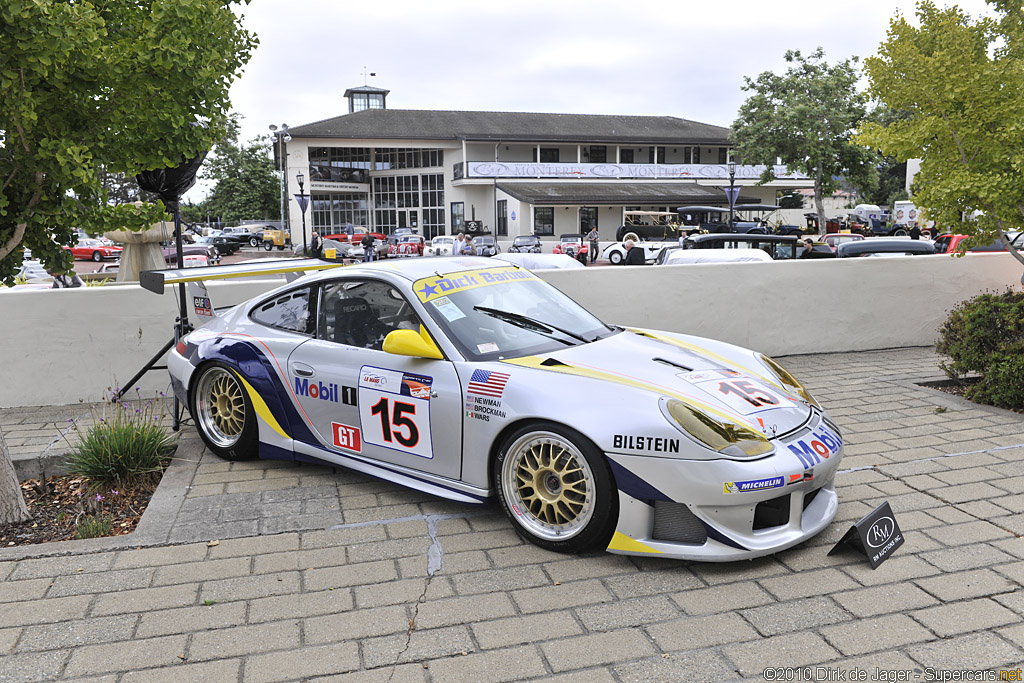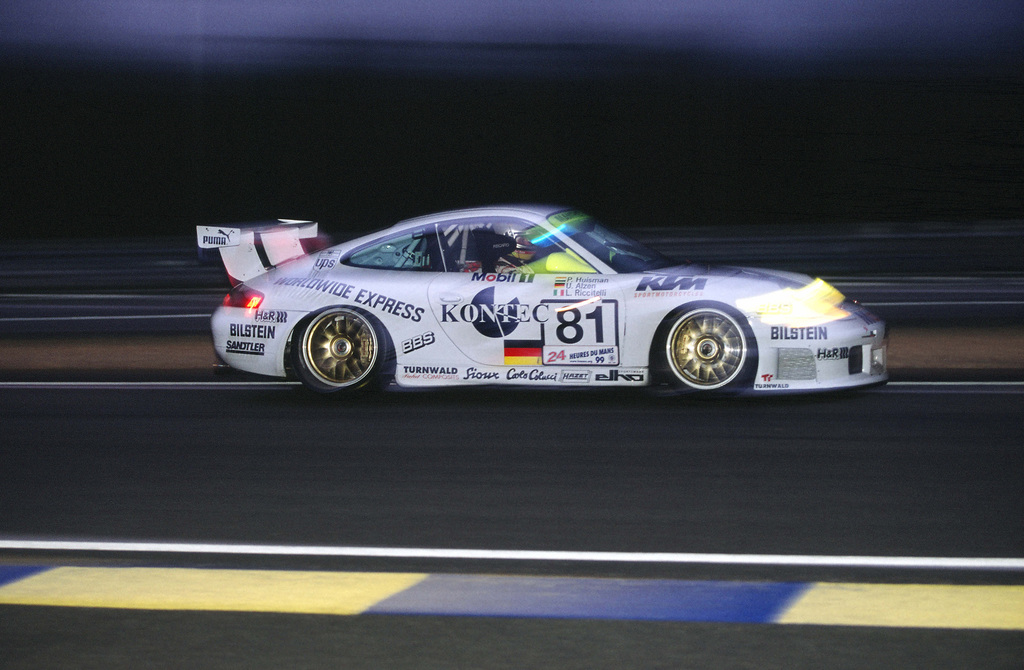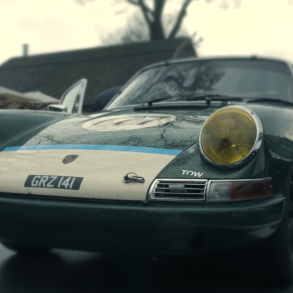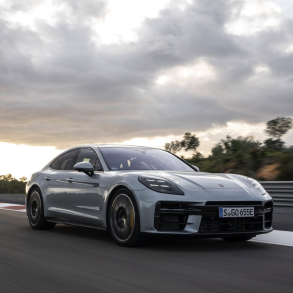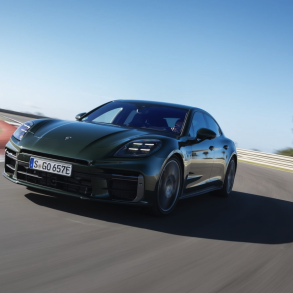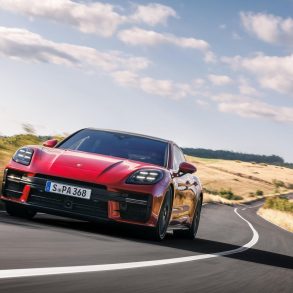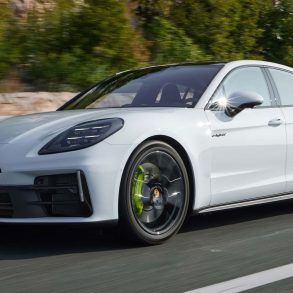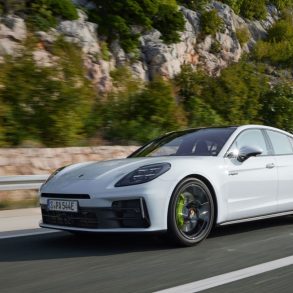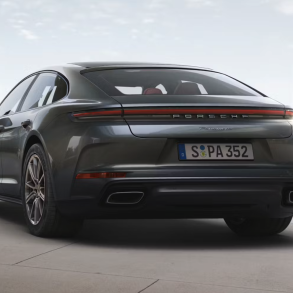(2000) Porsche 911 GT3 R (996) – Ultimate Guide
In the 2000 FIA GT Championship, the 996 GT3 R was the dominant racer in the new N-GT class and won every run. In the same year, the factory-supported Phoenix Racing won the 24-hour race at the Nürburgring.
The GT3 R and RS cars had their roots tied to the 996 GT3 special. A handful of 996 GT3 cars were produced to meet the racing scantioning bodies homologation rules for Porsche’s next GT racer. The GT3 is also the basis of the Porsche Cup car, used at club level events all over the globe, and the now famous Porsche SuperCup.
March 1999 saw Porsche debut their hot rod GT3 at the Geneva Salon, this normally aspirated homologation special the German marques modern day successor to their 2.7 Carrera RS of 1972. It featured an all-new 3.6-litre engine based on the forced induction units Porsche used for their GT1 project during the late nineties although, unlike earlier RS-badged 911’s, the GT3 was not to be a stripped out lightweight. Indeed, when Porsche revealed it weighed in some 30kg heavier than the stock Carrera Coupe, many enthusiasts thought this new car would turn out to be a poor relative of those illustrious machines from the past.
However, that specially developed new engine ensured the GT3 became the worlds first production car to lap the fabled Nurburgring in under eight minutes. Indeed, many important developments were made througout the rear-wheel drive only GT3, not least its chassis which saw a 30mm drop in ride height over the regular 3.4-litre 996 Carrera Coupe. There were also fully adjustable dampers with shorter, firmer springs and adjustable anti-roll bars all-round, this heavily modified suspension geometry featuring adjustable spring platforms and strengthened ball bearings. The traction control and braking were also upgraded for the GT3, thirteen-inch ventilated cross-drilled discs with red four-piston aluminium block calipers hauling it down from speed. Meanwhile, the extremely high performance new motor was developed, not from the regular Carrera’s engine, but as a normally aspirated version of Porsche’s GT1 motor, turbocharged versions of which had so famously been used to win Le Mans in 1998. Complete with titanium con rods that allowed the engine to rev much harder and higher than the 3.4, displacement of these specially built engines was 3600cc thanks to a bore and stroke of 100mm x 76.4mm respectively, output rising by a phenomenal 60bhp over the cooking motor with 360bhp on tap at 7200rpm. Achieved with a higher compression ratio of 11.7:1, dry-sump lubrication and re-mapped Bosch DME sequential engine management, the GT3 was further enhanced with a six-speed gearbox taken from the awesome 993 GT2, a few special examples of which had been built in 1998.
So despite that 30kg weight gain on the Carrera Coupe, Porsche’s GT3 posted some outstanding performance figures, top speed hitting a mammoth 187mph whilst zero to sixty took just 4.8 seconds! Aesthetically, a number of subtle aerodynamic tweaks were made, a deep wraparound chin spoiler minimising air-flow beneath the car. Deeper side sills further enhanced the GT3’s more aggressive demeanour, as did a unique two-tier adjustable rear wing featuring a Gurney flap mounted on its lower trailing edge. This look was also achievable on 3.4-litre 996’s (as the Cup Aero kit through the Tequipment enhancement line) although you can tell the genuine GT3’s by their super low ride-height.
Inside, there were leather trimmed bucket seats and GT3 logos on the instrument facias whilst, in true RS tradition, the stock Carrera’s rear seats were junked and the vacant area trimmed with carpet. But otherwise, only a couple of the luxuries you would normally find on the Carrera were missing from the GT3, air conditioning having been moved to the options list and electric mirrors deleted, power-operated windows remaining. Those customers seeking a more competition-oriented cabin for their GT3 could specify the Club Sport package as a no cost option, this highly desirable spec featuring a built-in roll cage, fixed back competition bucket seats trimmed in fire-proof cloth, internal and external cut out switches and a fire extinguisher. Also included were six-point race harnesses and an engine that featured a lightweight single mass flywheel for increased responsiveness. Lighter and faster than the ‘regular’ GT3 then, Club Sport versions were capable of sprinting to sixty some three tenths of a second faster although top speed remained unchanged.
Launched at the Geneva Salon during March ’99, the GT3 was an immediate hit with the press and public alike, the former widely hailing this new hot rod 911 as one of the finest incarnations of a legendary model whose history has spanned over thirty-five years. Although only twenty right-hand drive models were initially going to be available from May 1999, a handful of additional UK cars were later completed but, whilst rare in Europe, the GT3 is even more scarce in the USA where it was outlawed from sale. This really was a 911 of the highest order.
In 2001, the modified version, now called the 996 GT3 RS, was used. The vehicle was not only very successful in its class, it also achieved overall victories. For the 2004 and 2005 racing season, Porsche Motorsport used the 911 GT3 RSR.


